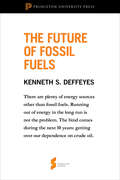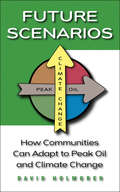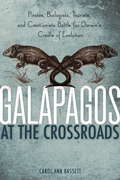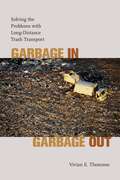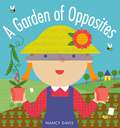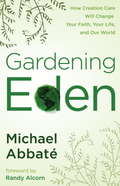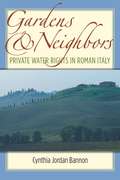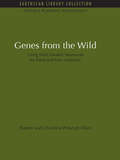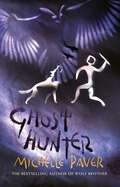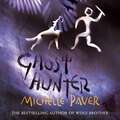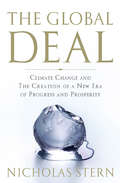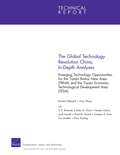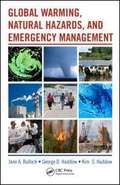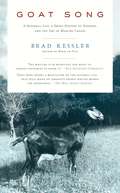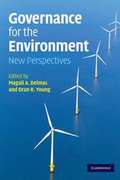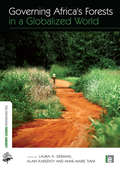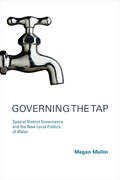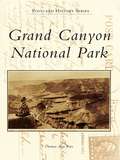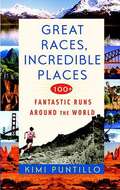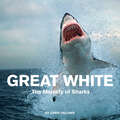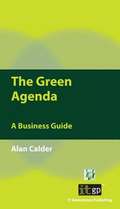- Table View
- List View
The Future of Fossil Fuels: From Hubbert's Peak (Princeton Shorts #4)
by Kenneth S. DeffeyesAs debates about the effects of fossil fuels on our climate and foreign policy intensify, the question of just how much longer we can depend on this finite source of energy becomes more and more pressing. This selection from Hubbert's Peak, the leading book on the limits of our oil supply, forecasts what the future will bring for fossil fuels and what the alternatives are likely to be. Princeton Shorts are brief selections excerpted from influential Princeton University Press publications produced exclusively in eBook format. They are selected with the firm belief that while the original work remains an important and enduring product, sometimes we can all benefit from a quick take on a topic worthy of a longer book. In a world where every second counts, how better to stay up-to speed on current events and digest the kernels of wisdom found in the great works of the past? Princeton Shorts enables you to be an instant expert in a world where information is everywhere but quality is at a premium. The Future of Fossil Fuels does just that.
Future Scenarios
by David HolmgrenIn Future Scenarios, permaculture co-originator and leading sustainability innovator David Holmgren outlines four scenarios that bring to life the likely cultural, political, agricultural, and economic implications of peak oil and climate change, and the generations-long era of "energy descent" that faces us. "Scenario planning," Holmgren explains, "allows us to use stories about the future as a reference point for imagining how particular strategies and structures might thrive, fail, or be transformed." Future Scenarios depicts four very different futures. Each is a permutation of mild or destructive climate change, combined with either slow or severe energy declines. Probable futures, explains Holmgren, range from the relatively benign Green Tech scenario to the near catastrophic Lifeboats scenario. As Adam Grubb, founder of the influential Energy Bulletin Web site, says, "These aren't two-dimensional nightmarish scenarios designed to scare people into environmental action. They are compellingly fleshed-out visions of quite plausible alternative futures, which delve into energy, politics, agriculture, social, and even spiritual trends. What they do help make clear are the best strategies for preparing for and adapting to these possible futures." Future Scenarios provides brilliant and balanced consideration of the world's options and will prove to be one of the most important books of the year.
Galapagos at the Crossroads: Pirates, Biologists, Tourists, and Creationists Battle for Darwin's Cradle of Evolution
by Carol Ann BassettAre the Galapagos really more special than other places? Or are they one example of many microcosms that exist on this fragile planet we call home? I had to conclude that they are unique. Scientists have now said farewell to the Holocene and have rung in a new epoch. They've dubbed it the Anthropocene--a human dominated age in which urban-industrial society has contributed to global warming, mass extinctions, the displacement of species and cultures, and the depletion of non-renewable resources. The impacts, they say, are permanent; the course of evolution itself has been thrust into the unknown.
Garbage In, Garbage Out: Solving the Problems with Long-distance Trash Transport
by Vivian E. ThomsonYour garbage is going places you'd never imagine. What used to be sent to the local dump now may move hundreds of miles by truck and barge to its final resting place. Virtually all forms of pollution migrate, subjected to natural forces such as wind and water currents. The movement of garbage, however, is under human control. Its patterns of migration reveal much about power sharing among state, local, and national institutions, about the Constitution's protection of trash transport as a commercial activity, and about competing notions of social fairness. In Garbage In, Garbage Out, Vivian Thomson looks at Virginia's status as the second-largest importer of trash in the United States and uses it as a touchstone for exploring the many controversies around trash generation and disposal.Political conflicts over waste management have been felt at all levels of government. Local governments who want to manage their own trash have fought other local governments hosting huge landfills that depend on trash generated hundreds of miles away. State governments have tried to avoid becoming the dumping grounds for cities hundreds of miles away. The constitutional questions raised in these battles have kept interstate trash transport on Congress's agenda since the early 1990s. Whether the resulting legislative proposals actually address our most critical garbage-related problems, however, remains in question.Thomson sheds much-needed light on these problems. Within the context of increased interstate trash transport and the trend toward privatization of waste management, she examines the garbage issue from a number of perspectives--including the links between environmental justice and trash management, a critical evaluation of the theoretical and empirical relationship between economic growth and environmental improvement, and highlighting the ways in which waste management practices in the US differ from those in the European Union and Japan. Thomson then provides specific, substantive recommendations for our own policymakers.Everything eventually becomes trash. As we explore the long, often surprising, routes our garbage takes, we begin to understand that it is something more than a mere nuisance that regularly "disappears" from our curbside. Rather, trash generation and management reflect patterns of consumption, political choices over whether garbage is primarily pollution or commerce, the social distribution of environmental risk, and how our daily lives compare with those of our counterparts in other industrialized nations.
A Garden of Opposites
by Nancy DavisEnter this beautiful garden and see what opposites you’ll find! A short caterpillar and a long garden snake, a closed bud and an open blossom. These delightful images will teach youngsters about basic opposite concepts, and about the charms and wonders of the outdoors!This simple book has a surprise treat at the end—a gatefold displaying the whole garden, with opposites galore for little ones to search for. Plus, sturdy cardstock pages make this book perfect for reading indoors . . . or for taking to the park!
Gardening Eden: How Creation Care Will Change Your Faith, Your Life, and Our World
by Michael AbbateBefore the snake,the apple,and the Ten Commandments,God created a garden..."Spiritual environmentalism" did not start out as an oxymoron-it was an invitation. Yet today, many believe God's first job description for humankind has been replaced by other "worthier pursuits". Why has this simple instruction become so controversial? How does one sort through all the mixed messages? Is changing our lives to save the world really our responsibility-or even possible?Gardening Eden invites you to consider a new, spiritual perspective to practical environmentalism. The question is not whether our souls find expression and inspiration in our incredible planet, but how best to preserve that fundamental connection. Green living is no longer a fad-simple lifestyle solutions are now available to everyone. Discover creation care as an act of worship and a call to deeper harmony with our Creator, our fellow gardeners, and our living Earth. Gardening Eden is the primer in how this shift will transform not only our world, but your very soul.From the Trade Paperback edition.
Gardens and Neighbors: Private Water Rights in Roman Italy
by Cynthia Jordan Bannon"Gardens and Neighborswill provide an important building block in the growing body of literature on the ways that Roman law, Roman society, and the economic concerns of the Romans jointly functioned in the real world." --Michael Peachin, New York University. As is increasingly true today, fresh water in ancient Italy was a limited resource, made all the more precious by the Roman world's reliance on agriculture as its primary source of wealth. From estate to estate, the availability of water varied, in many cases forcing farmers in need of access to resort to the law. In Gardens and Neighbors: Private Water Rights in Roman Italy, Cynthia Bannon explores the uses of the law in controlling local water supplies. She investigates numerous issues critical to rural communities and the Roman economy. Her examination of the relationship between farmers and the land helps draw out an understanding of Roman attitudes toward the exploitation and conservation of natural resources and builds an understanding of law in daily Roman life. An editor of the series Law and Society in the Ancient World, Cynthia Jordan Bannon is also Associate Professor of Classical Studies at Indiana University, Bloomington. Her previous book was The Brothers of Romulus: Fraternal Pietas in Roman Law, Literature, and Society(1997). Visit the author's website: http://www.iub.edu/~classics/faculty/bannon.shtml.
Genes from the Wild: Using Wild Genetic Resources for Food and Raw Materials (Natural Resource Management Set)
by Robert Prescott-Allen Christine Prescott-AllenTomatoes could not be grown commercially without the help of their wild relatives. A single wild species of rice has helped double rice production in Asia. Wild silk-worms are enabling India to expand its silk industry. A wild carp with resistance to cold has been used to extend Soviet carp production further into the north. Wild genetic resources - the heritable characteristics of wild plants and animals - are used increasingly to improve domesticated crops and livestock and as new sources of food and of raw materials. But habitat destruction, over-exploitation and competition from introduced species is destroying many gene pools even before they have been identified. Genes from the Wild describes the growing contribution of wild genetic resources to the production of food and raw materials, describes their characteristics, explains the benefits and problems of using them and outlines the ways in which they are threatened and the measures being taken to conserve them. Originally published in 1988
Ghost Hunter: Book 6 from the bestselling author of Wolf Brother (Chronicles of Ancient Darkness #6)
by Michelle PaverA boy. A wolf. A legend for all time. The sixth book in the internationally bestselling WOLF BROTHER (Chronicles of Ancient Darkness) series by renowned author Michelle Paver.As winter approaches and Souls' Night draws near, the Eagle Owl Mage holds the clans in a grip of terror. To fulfill his destiny, Torak seeks his lair in the Mountain of Ghosts. Accompanied by Renn and Wolf, Torak must defy demons and tokoroths, and find his way through the Gorge of the Hidden People. Wolf must overcome terrible grief and Renn must make an agonizing decision. And in the final battle against the Soul-Eater, Torak will face the most heart-rending choice of all ...Audio edition also available, read by Sir Ian McKellen.
Ghost Hunter: Book 6 from the bestselling author of Wolf Brother (Chronicles of Ancient Darkness #6)
by Michelle PaverA boy. A wolf. A legend for all time. The sixth book in the internationally bestselling WOLF BROTHER (Chronicles of Ancient Darkness) series by renowned author Michelle Paver. Audio edition read by Sir Ian McKellen.As winter approaches and Souls' Night draws near, the Eagle Owl Mage holds the clans in a grip of terror.To fulfill his destiny, Torak seeks his lair in the Mountain of Ghosts. Accompanied by Renn and Wolf, Torak must defy demons and tokoroths, and find his way through the Gorge of the Hidden People. Wolf must overcome terrible grief and Renn must make an agonizing decision.And in the final battle against the Soul-Eater, Torak will face the most heart-rending choice of all ...
Ghost Hunter: Book 6 from the bestselling author of Wolf Brother (Chronicles of Ancient Darkness #6)
by Michelle PaverA boy. A wolf. A legend for all time. The sixth book in the internationally bestselling WOLF BROTHER (Chronicles of Ancient Darkness) series by renowned author Michelle Paver.As winter approaches and Souls' Night draws near, the Eagle Owl Mage holds the clans in a grip of terror. To fulfill his destiny, Torak seeks his lair in the Mountain of Ghosts. Accompanied by Renn and Wolf, Torak must defy demons and tokoroths, and find his way through the Gorge of the Hidden People. Wolf must overcome terrible grief and Renn must make an agonizing decision. And in the final battle against the Soul-Eater, Torak will face the most heart-rending choice of all ...Audio edition also available, read by Sir Ian McKellen.
The Global Deal: Climate Change and the Creation of a New Era of Progress and Prosperity
by Nicholas SternIn October 2006, Nicholas Stern, one of the greatest economists and public intellectuals of our day, made headlines around the world with his report, which reviewed the costs and benefits of dealing with global warming. The world's community has learned that it must act to mitigate global climate change, but until the Stern Review, no one knew how much it would cost, and how to do it. Now, Stern has transformed his report into a powerful narrative book for general readers. The Global Deal evaluates the economic future, and the essential steps we must take to protect growth and reduce poverty while managing climate change.The future Stern outlines is optimistic and pragmatic; he believes we have the capacity and creativity to change. But we need the will to inspire our political leaders to drive a new global strategy.
Global Science: Earth/Environmental Systems Science
by John Christensen Teri ChristensenNIMAC-sourced textbook
The Global Technology Revolution China, In-Depth Analyses
by Richard Silberglitt Anny WongChina's Tianjin Binhai New Area and the Tianjin Economic-Technological Development Area commissioned a technology-foresight study to help them plan for economic growth. The authors recommend seven emerging technology applications (TAs)--solar energy, mobile communications, rapid bioassays, new water-purification systems, molecular-scale drugs, electric and hybrid vehicles, and green manufacturing--and describe drivers, barriers, and plans for each.
Global Warming
by Sir John HoughtonJohn Houghton's market-leading textbook is now in full color and includes the latest IPCC findings, making it the definitive guide to climate change. Written for students across a wide range of disciplines, its simple, logical flow of ideas gives an invaluable grounding in the science and impacts of climate change and highlights the need for action on global warming. Is there evidence for climate changing due to human activities? How do we account for recent extremes of weather and climate? Can global electricity provision and transport ever be carbon free? Written by a leading figure at the forefront of action to confront humanity's most serious environmental problem, this undergraduate textbook comprehensively explores these and other issues, allowing students to think through the problem, assess the data and draw conclusions on the action that should be taken, by governments, by industry and by each and every one of us.
Global Warming, Natural Hazards, And Emergency Management
by George Haddow Jane A. Bullock Kim HaddowScientists predict the earth is facing 40-to-60 years of climate change, even if emissions of carbon dioxide and other global warming gases stopped today. One inevitable consequence of the greenhouse gases already in the atmosphere will be an increase in the frequency and severity of natural disaster events. Global Warming, Natural Hazards, and Emergency Management documents the imperative need for communities to prepare for the coming effects of climate change and provides a series of in-depth, road-tested recommendations on how to reduce risks for communities and businesses. Frontline Advice for Increasing Defenses and Reducing Impacts of Global Warming Authored and edited by emergency management and environmental protection professionals from the Federal Emergency Management Agency (FEMA) and the Sierra Club, this book offers case histories from communities across America that have successfully reduced the extent and consequences of natural disasters. These examples are becoming increasingly important to understand and replicate as the risks to communities created by a changing climate rise. This book recognizes three fundamental principles essential to developing a disaster-prevention strategy: The protection of natural systems is an important security measure The reduction of disaster risk, not just response, is of great importance Local communities must take the lead in prevention efforts Provides Local Governments with Replicable Case Histories of Hazard Mitigation Efforts This no-nonsense reference is a procedural roadmap for emergency managers, policy makers, and community officials. It explains how to develop community partnerships among a myriad of stakeholders; identifies staffing and resource requirements for successful programs; and provides a step-by-step demonstration of the disaster-planning process at the community level.
Goat Song: A Seasonal Life, a Short History of Herding, and the Art of Making Cheese
by Brad KesslerAcclaimed novelist Brad Kessler lived in New York City but longed for a life on the land where he could grow his own food. After years of searching for a home, he and his wife, photographer Dona Ann McAdams, found a mountain farmhouse on a dead-end road, with seventy-five acres of land. One day, when Dona returned home with fresh goat milk from a neighbor's farm, Kessler made a fresh chèvre, and their life changed forever. They decided to raise dairy goats and make cheese. Goat Song tells about what it's like to live intimately with animals who directly feed you. As Kessler begins to live the life of a herder -- learning how to care for and breed and birth goats -- he encounters the pastoral roots of so many aspects of Western culture. Kessler reflects on the history and literature of herding, and how our diet, our alphabet, our religions, poetry, and economy all grew out of a pastoralist milieu among hoofed animals. Kessler and his wife adapt to a life governed by their goats and the rhythm of the seasons. And their goats give back in immeasurable ways, as Kessler proves to be a remarkable cheesemaker, with his first tomme of goat cheese winning lavish praise from America's premier cheese restaurants. In the tradition of Thoreau's Walden and Annie Dillard's Pilgrim at Tinker Creek, Goat Song is both a spiritual quest and a compelling and beautiful chronicle of living by nature's rules.
Governance for the Environment
by Magali A. Delmas Oran R. YoungWe live in an era of human-dominated ecosystems in which the demand for environmental governance is rising rapidly. At the same time, confidence in the capacity of governments to meet this demand is waning. How can we address the resultant governance deficit and achieve sustainable development? This book brings together perspectives from economics, management, and political science in order to identify innovative approaches to governance and bring them to bear on environmental issues. The authors' analysis of important cases demonstrates how governance systems need to fit their specific setting and how effective policies can be developed without relying exclusively on government. They argue that the future of environmental policies lies in coordinated systems that simultaneously engage actors located in the public sector, the private sector, and civil society. Governance for the Environment draws attention to cutting-edge questions for practitioners and analysts interested in environmental governance.
Governing Africa's Forests in a Globalized World (The Earthscan Forest Library)
by Laura A. German Alain Karsenty Anne-Marie TianiMany countries around the world are engaged in decentralization processes, and most African countries face serious problems with forest governance, from benefits sharing to illegality and sustainable forest management. This book summarizes experiences to date on the extent and nature of decentralization and its outcomes - most of which suggest an underperformance of governance reforms - and explores the viability of different governance instruments in the context of weak governance and expanding commercial pressures over forests. Findings are grouped into two thematic areas: decentralization, livelihoods and sustainable forest management; and international trade, finance and forest sector governance reforms. The authors examine diverse forces shaping the forest sector, including the theory and practice of decentralization, usurpation of authority, corruption and illegality, inequitable patterns of benefits capture and expansion of international trade in timber and carbon credits, and discuss related outcomes on livelihoods, forest condition and equity. The book builds on earlier volumes exploring different dimensions of decentralization and perspectives from other world regions, and distills dimensions of forest governance that are both unique to Africa and representative of broader global patterns. The authors ground their analysis in relevant theory while drawing out implications of their findings for policy and practice.
Governing Sustainability
by W. Neil Adger Andrew JordanThe crisis of unsustainability is, above all else, a crisis of governance. The transition to a more sustainable world will inevitably require radical changes in the actions of all governments, and it will call for significant changes to the lifestyles of individuals everywhere. Bringing together some of the world's most highly regarded experts on governance and sustainable development, this book examines these necessary processes and consequences across a range of sectors, regions and other important areas of concern. It reveals that the governance of sustainable development is politically contested, and that it will continue to test existing governance systems to their limits. As an assessment of existing policy practices, it will be of great interest to all those who are preparing themselves - or their organisations - for the sustainability transition.
Governing the Tap: Special District Governance and the New Local Politics of Water (American and Comparative Environmental Policy)
by Megan MullinAn analysis of the political consequences of special district governance in drinking water management that offers new insights into the influence of political structures on local policymaking.More than ever, Americans rely on independent special districts to provide public services. The special district—which can be as small as a low-budget mosquito abatement district or as vast as the Port Authority of New York and New Jersey—has become the most common form of local governance in the United States. In Governing the Tap, Megan Mullin examines the consequences of specialization and the fragmentation of policymaking authority through the lens of local drinking-water policy. Directly comparing specific conservation, land use, and contracting policies enacted by different forms of local government, Mullin investigates the capacity of special districts to engage in responsive and collaborative decision making that promotes sustainable use of water resources. She concludes that the effect of specialization is conditional on the structure of institutions and the severity of the policy problem, with specialization offering the most benefit on policy problems that are least severe. Mullin presents a political theory of specialized governance that is relevant to any of the variety of functions special districts perform. Governing the Tap offers not only the first study of how the new decentralized politics of water is taking shape in American communities, but also new and important findings about the influence of institutional structures on local policymaking.
Grand Canyon National Park
by Thomas Alan RatzArizona is proud to have one of the Seven Natural Wonders of the World--the Grand Canyon. With the arrival of the Santa Fe and Union Pacific Railroad in the early 20th century, the development of the canyon began in earnest. The railroads, along with the Santa Fe's business partner, the Fred Harvey Company, greatly promoted the Grand Canyon as a tourist destination through books, pamphlets, and magazine advertisements. On February 26, 1919, Congress established the Grand Canyon National Park, and the federal government became a promoter of the Grand Canyon, too. But perhaps the best promoters of the Grand Canyon were the people who wrote home on picture postcards telling their friends and families about the amazing canyon. A number of the postcards published about the park can be found within the pages of this book.
Great Races, Incredible Places: 100+ Fantastic Runs Around The World
by Kimi Puntillo"Running the Mount Everest Marathon is like running in heaven."Kimi Puntillo has literally run around the globe to bring over 100 of the world's most entertaining, breathtaking, and unforgettable races to runners of every capability.Ranging from marathons to one-milers, from the pristine glaciers of Antarctica to Vermont's covered bridges, two-time Guinness World Record holder Puntillo offers practical and unique advice as only a woman who has run a marathon on every continent can. She shares her tips for the most desirable gear, snacks to carry in your backpack, how savvy runners get into events that are sold out months in advance, and the best local sights to take in on your downtime. Try the Great Wall Marathon, where you'll climb 60,000 steps, crawl through ancient tower windows, and follow in the footsteps of ancient Chinese history. The Marathon du Médoc spoils you with wine every three miles at Bordeaux's most elite châteaus and fresh-shucked oysters at mile 23. Or, if music is your thing and you long for a different rock band at every mile marker, head out to the Rock 'n' Roll Marathon series in locales across the United States. Whether you want to make those running dreams come true or simply be entertained, here are dozens of running adventures sure to get your heart pumping.From the Trade Paperback edition.
Great White: The Majesty of Sharks
by Chris FallowsFor most people, sharks and fear go hand in hand. Renowned photographer and conservationist Chris Fallows maintains a more nuanced relationship with the super predator. Gasp-inducing in their immediacy and surprise, Fallows's brilliant photographs present these mighty creatures in a different light. Great White, the first publication to collect Fallows's work reveals the sublime beauty of sharks and provides a rare glimpse into the largely unseen world of great whites, hammerheads, and other breeds. Fallows captures these fearsome creatures both above water, as they intersect with humanity, and below, in their mysterious underwater domain. A one-of-a-kind portrait of the shark and a superlative study of the nature photographer's art, this collection is bound to turn heads and elicit a deep appreciation for the creatures that inhabit our oceans.
The Green Agenda: A Business Guide
by Alan Calder'Climate change', 'global warming' and, before that, 'the new ice age' have all been fashionably topical issues about which individuals and organizations have worried themselves over the course of the last twenty years or so. This guide was written to introduce, to a business audience, the opposing groups and the key climate change concepts, to provide an overview of a Green IT strategy and to set out a straightforward, bottom line-orientated Green IT action plan. The fact that this will also enable the organization to comply with the growing range of ecologically- focused range of regulations is an additional benefit!
